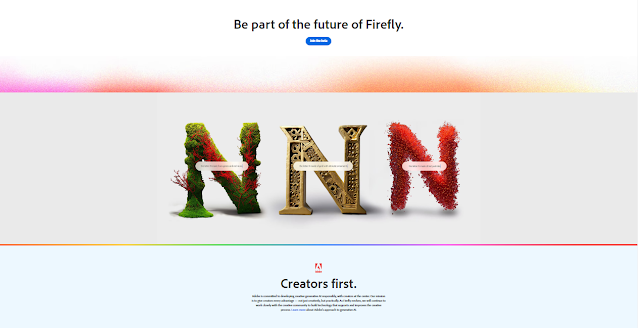Adobe has been a creative industry leader for decades because to its revolutionary software solutions. Adobe products, from Photoshop to InDesign, have become the go-to tools for artists, designers, and marketers all across the world. Adobe has recently expanded its capabilities beyond traditional software, investigating the possibilities of artificial intelligence (AI) and the Internet of Things (IoT). (IoT). Adobe Firefly is one such venture.
Adobe Firefly is a project that investigates the convergence
of creativity, technology, and sustainability. It aspires to empower creatives
to make more informed decisions about the environmental impact of their work
while still allowing them to push the limits of their craft. In this blog post,
we'll go over what Adobe Firefly is, how it works, and how to use it.
What is Adobe Firefly?
Adobe Firefly is a smart label that can be attached to
physical products, such as packaging, labels, or posters. The label contains a
microcontroller that can sense and communicate data about the product, such as
its temperature, humidity, and location. This data can then be transmitted to
Adobe’s Creative Cloud, where it can be analyzed and visualized in real time.
The goal of Adobe Firefly is to give creatives more control
over the impact of their work on the environment. By providing data about the
product’s lifecycle, from production to disposal, designers can make more
informed decisions about materials, processes, and transportation. This
information can also be used to create more sustainable packaging and reduce
waste.
How does Adobe Firefly work?
Adobe Firefly uses a combination of hardware and software to
collect and analyze data. The hardware consists of a small microcontroller that
is attached to the product. This microcontroller contains sensors that can
detect changes in temperature, humidity, light, and other environmental
factors. It also has a wireless transmitter that can send this data to Adobe’s
Creative Cloud.
Once the data is collected, it can be visualized in a
variety of ways using Adobe’s software tools. For example, designers can create
custom dashboards that display real-time data about their products. They can
also use machine learning algorithms to analyze the data and identify patterns
or trends. This information can then be used to make informed decisions about
the product’s design, production, and distribution.
What is Adobe Firefly's potential?
sustainability. Designers maymake more informed decisions regarding
materials, methods, and transportation by giving real-time data about
the environmental impact of their work. This can result in more
environmentally friendly packaging, less waste, and a lower carbon impact.
Furthermore, Adobe Firefly can assist creatives in pushing
the frontiers of what is possible in their profession. Designers can find new
trends and patterns in data by utilizing machine learning algorithms to analyze
it. This allows them to inspire new designs and approaches. This can result in
more original and creative work that is both long-lasting and visually
appealing.
Conclusion
Adobe Firefly is an exciting project that brings together
creativity,technology, and sustainability. By providing real-time data about
the environmental impact of physical products, designers can make more informed
decisions about their work. This can lead to more sustainable packaging,
reduced waste, and a lower carbon footprint. In addition, Adobe Firefly can
also inspire new approaches and designs, leading to more innovative and
visually stunning work. As Adobe continues to explore the possibilities of AI
and IoT, we can expect to see more exciting projects like Adobe Firefly in the
future.



Comments
Post a Comment